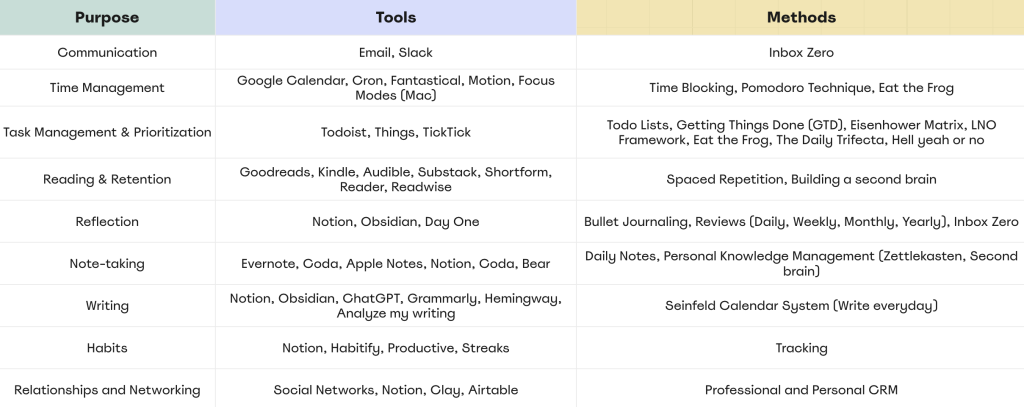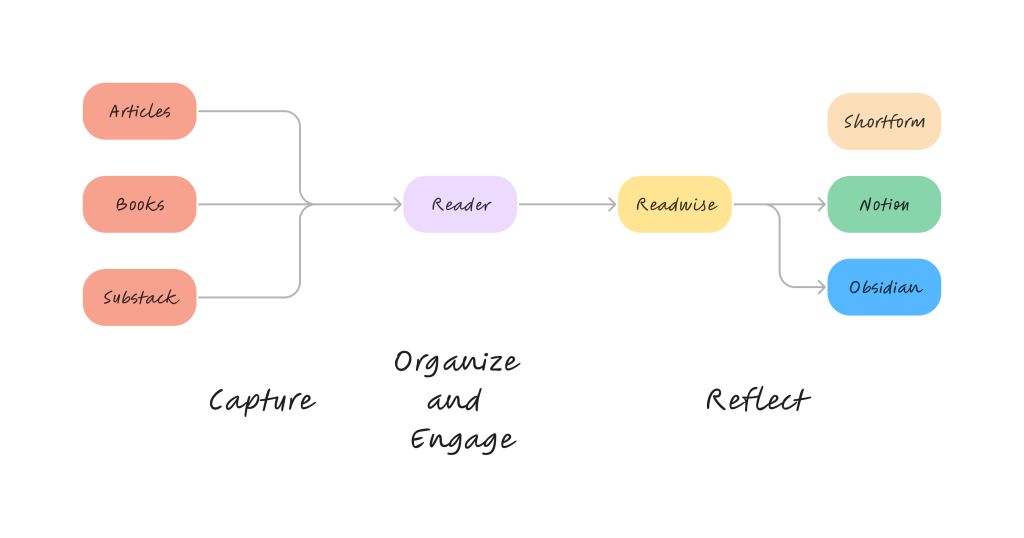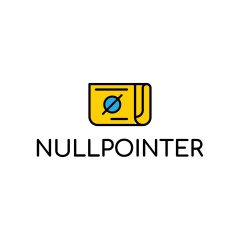Embracing productivity systems leads you to handle all aspects of your personal and professional lives effectively. These systems provide a framework for efficient task management, improved time allocation, enhanced focus, reduced stress levels, goal attainment, and adaptability to changing circumstances.
In this post, we will discuss:
- A four-step workflow—Capture, Organize, Engage, and Reflect
- Tools and Methods
- Workflow, Tools and Methods in Action
- Getting started on building your system
Workflow
This workflow is an adapted version system behind Getting Things Done(Capture, Clarify, Organize, Review, Engage) and Building a Second Brain (Capture, Organize, Distill, Express).

Capture
Set up your system so that capturing relevant information is quick and frictionless. Don’t think a lot about what you are capturing. It can be a stream of thoughts, ideas, inspiration, articles to read, etc.
This is because our brains go through what is called the Zeigarnik effect. It postulates that people remember unfinished or interrupted tasks better than completed tasks.
“Your mind is for having ideas, not holding them.” – David Allen
Todo-list applications like Todoist, Things give you features that help you capture tasks in a frictionless way. Applications like Reader provide extensions to your browser and mobile devices so you can capture reading material quickly.
Organize
Areas, Goals, and Projects
- Areas: Areas are dedicated spaces for every significant long terms aspect of your life. Some examples are Career/Work, Home, Family & Friends, Health, Wealth, Growth/Learning, etc.
- Goals: You will have goals you want to achieve in each identified area.
- Projects: These are the things you do to achieve your goals.
Make sure to organize everything around your goals. If your “goal” is to get promoted, lead high-impact “projects” that are in your “Work & Career” area. If your “goal” is to lose weight, your “projects” would be to run/walk daily and eat healthy to maintain a calorie deficit. This would be in your “Health” area.
Use systems like prioritization techniques like Eisenhower Matrix, LNO framework, The Daily Trifecta, Hell yeah or no etc
Engage
This is the do part of the workflow. Seek to optimize for deep work using the tools at your disposal. Use methods like Time Blocking, Pomodoro Technique, Eat the Frog etc.
Reflect
On a regular cadence, review and reflect. You review your emails, messages, tasks, thoughts, and ideas, as well as the system.
When you review your emails, messages, tasks, thoughts, and ideas, tag them appropriately and add context for your future self or archive what doesn’t need to be followed up. Use methods like Inbox Zero for your email, messages, and tasks. Develop habits like journaling and note-taking for your thoughts and ideas.
Reflecting on your system is vital. This is when you adjust your workflow to your needs and preferences.
Tools and Methods
Remember, tools and methods should be adapted to your needs, not the other way around. Don’t hesitate to experiment, mix and match, and even switch between digital and analog, depending on the task. Here are some tools and methods for you to explore:

Workflow, Tools and Methods in Action
Task Management
While I have previously used Things for task management, I currently use Todoist.
- Capture
- I use Todoist’s quick add shortcut and natural language detection to quickly capture my tasks in the Inbox.
- Organize: During the organization process, I:
- place these tasks into specific projects.
- apply the Eisenhower Matrix to prioritize my tasks and use the “leverage“, “neutral“, and “overhead“ labels to apply the LNO framework.
- tag tasks that can be done quickly with a “quick” label.
- use a “delegate” label on the tasks I need to delegate and remove them from Todoist. I move them to Notion with the name of the person I delegated to and the date so I can follow up promptly.
- use “someday” and “bucketlist” labels for things I want to keep around and delete tasks I don’t intend to do.
- Engage
- I use the Time Blocking method and Focus Modes (a feature in the Apple ecosystem) to focus deeply.
- Reflect
- Daily, I clear out my Inbox. This is where I Organize. Every week, I plan my tasks for the week. I use Google Calendar’s Focus Time to keep my calendar free and use Todoist’s integration with google calendar to place my tasks into those specific focus time slots. I do not slot tasks that are labeled “quick.”
Reading and Retention
Tools of choice that assist my reading and retention are Goodreads, Reader, Audible, Kindle, Substack, Shortform, Readwise

- Capture
- I use Goodreads to keep a list of books I want to read.
- I use Reader extensions for my browser (Arc) and phone to capture web articles I want to read later.
- I have also set up Substack RSS feeds on Reader. So anything published by people I follow on Substack appears on Reader.
- Organize
- On Reader, I clear out the Feed and Inbox regularly. I move them to the “Later” or “Archive” sections. Reader app has features like Daily Digest that help me stay caught up.
- I label articles accordingly.
- Engage
- I use Reader, Kindle, and Audible to read.
- On Reader as well as Kindle, I highlight and label.
- Reflect
- Readwise implements Spaced Repetition and presents some highlights daily for me to review. It also gamifies my reviews through its “streaks” and “leaderboard” features.
- Readwise also syncs all my highlights into Notion and Obsidian, which I can later use for my writing if needed.
- Shortform is a service that summarizes books. Re-reading the summaries keeps the concepts fresh.
- I (try to) manually create notes in Obsidian for books that I “read“ on Audible.
Getting started on building your system
Planning your productivity system needs exploration and experimentation. Perfecting your system will take time. Here are some tips:
- Explore and experiment, but start!: Exploring a lot of tools & methods and finding what works for you will take time. Get started!
- Prefer tools that integrate with each other: Use tools that integrate with each other so your workflow can be automated as much as possible.
- Setup an “Inbox” in every tool and organize on a regular cadence
- Review the system regularly: Don’t let your system get cluttered. Archive what you don’t need. Adjust the system to your needs and preferences.
- Trust your system: You will notice that the system will work for you over time. Your energy should solely be focused on keeping the system running.
- **Do not over-index: The goal is *not* to do everything but to do important things. It is crucial to prioritize self-care, establish clear boundaries, and periodically reassess goals to ensure they align with overall health and happiness.
